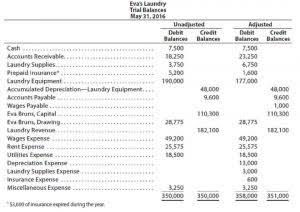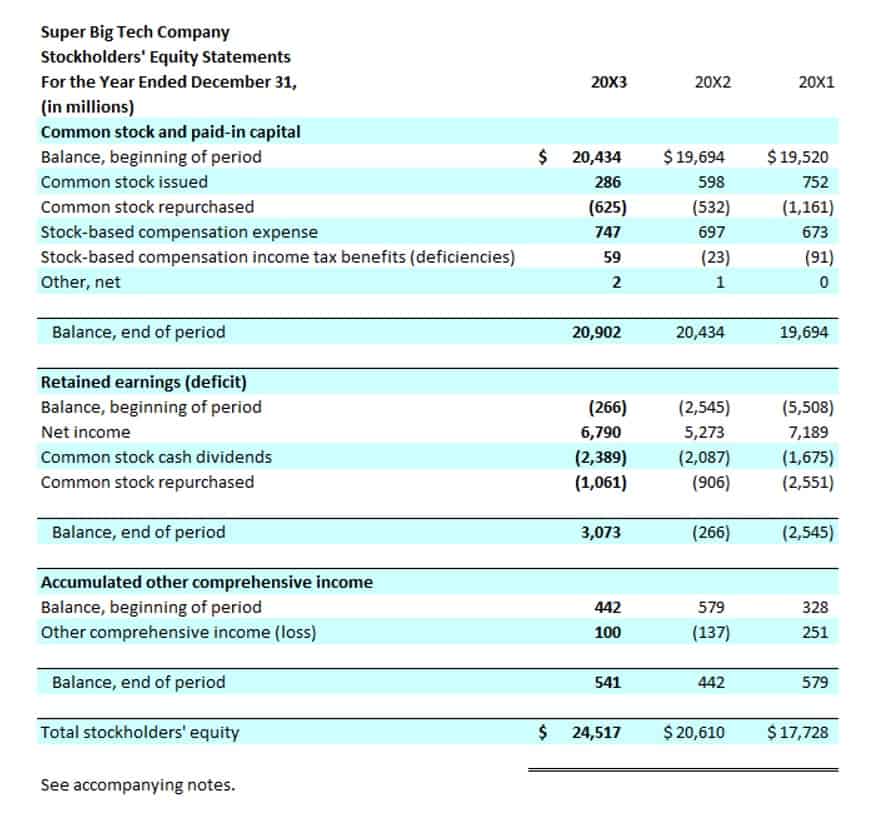
A positive Net Income indicates a profit, while a negative number represents a loss. Prepare your cash flow statement last because it takes information from all of your other financial statements. Create your balance sheet and include any current and long-term assets, current and noncurrent liabilities, and the difference between your assets and liabilities (aka equity). Use financial statements are typically prepared in the following order: the information from your income statement and retained earnings statement to help create your balance sheet. Now that you know all about the four basic financial statements, read on to learn what financial statement is prepared first.
Statement of retained earnings
The financial health and stability of an organization are critical factors for its stakeholders to consider. Typically, they gain valuable insights about a company by using four types of financial statements, found in its Annual Report. These are the Balance Sheet, the Profit and Loss Account, the Cash Flow Statement, and the Statement of Changes in Equity.
- Your cash flow statement shows you how cash has changed in your revenue, expense, asset, liability, and equity accounts during the accounting period.
- If they don’t, your balance sheet is unbalanced, and you need to find what’s causing the discrepancy between your assets, liabilities, and equity.
- Thus, it helps us understand whether the operations of a firm have created economic value over a certain timeframe..
- Your total assets must equal your total liabilities and equity on your balance sheet.
- Large companies prepare financial statements following GAAP (Generally Accepted Accounting Principles) and IFRS (International Financial Reporting Standards).
- With our comprehensive Fundamentals of Financial Reporting Course, you’ll acquire the skills and knowledge necessary to excel in your first job interview in accounting.
What Category of Elements of Financial Statements Do Retained Earnings Belong In?
- In double-entry accounting, all debits have corresponding credits of equal amounts.
- The financial statement that reflects a company’s profitability is the income statement.
- It shows any capital the owner put into the business, any withdrawals made as a salary, and the net income or net loss from the current period.
- Or, your company could be in negative cash flow territory, which indicates that you’re spending more money than what you’re bringing in.
- This is one reason the income statement has to be prepared first because the calculations from that statement are needed to complete the owner’s equity statement.
Maintaining a healthy balance — enough but not too much — is mission-critical. If the company revalues an asset and it’s worth less, it’s the company’s loss. The net income from the income statement will be used in the Statement of Equity. If you want to pursue a career in Financial Analysis, your practical skills are what set you apart from the crowd. With the most popular accounting and auditing tools at hand, you’ll have a better chance at enhancing your job prospects, irrespective of your background. The difference between Assets and Liabilities is sometimes referred to as net assets or net worth.
- These documents provide valuable insights into a business’s financial position to stakeholders such as investors, creditors, and employees.
- Suppose your company lent $20,000 to a friend’s company, ABC Corp., on December 1, 2023.
- A positive Net Income indicates a profit, while a negative number represents a loss.
- We’ve simplified the concepts and processes you need to understand in this quick guide.
Income statement
Use your balance sheet to find out where you stand financially. You can also use your balance sheet to help you make guided financial decisions. Before you can dive into the order of financial statements, find out what the main financial statements are.


And the most common items you will see are revenue, costs of goods sold, cash, inventory, accounts receivable, accounts payable, and marketable securities. Last but not least, use all of your financial data from your other three statements to create your cash flow statement. Your cash flow statement shows you how cash has changed in your revenue, expense, asset, liability, and equity accounts during the accounting period. After the trial balance is complete, adjusting entries are made.
We will examine the statement of cash flows in more detail later but for now understand it is a required financial statement and is prepared last. The statement of cash flows uses information from all previous financial statements. The balance sheet, lists the company’s assets, liabilities, and equity (including dollar amounts) as of a specific moment in time.

The Statement of Comprehensive Income (Profit & Loss Account)

Check out our FREE guide, Use Financial Statements to Assess the Health of Your Business, to learn more about the different types of financial statements for your business. Or, you can add your retained earnings statement to your balance sheet. Investors, lenders, and vendors might be interested in checking out your business’s cash flow statement. That way, they can see whether or not your company is a good investment. Both types of cash flow statements have three categories, unearned revenue which I’ll explain below.